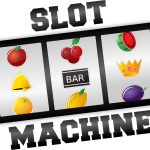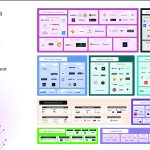
Warrior Trader founder Ross Cameron is known as a self-made millionaire who earned his money largely through day-trading. What few may know is he started from humble beginnings and experienced failures before achieving success. Unlike many famous traders, Cameron talks about his failures because he believes knowing about them can help guide new traders toward success.
While still an active trader, Cameron has made teaching others, including offering free content on the Warrior Trading YouTube channel, a big part of what he does. That includes focusing on day-trading realities, not fantasies.
He said some approach trading having heard stories about people who do well immediately. In these stories, “They start trading, they’re making money right away, and they go on to be a very successful trader,” Ross Cameron said in a recent video on the Warrior Trading YouTube channel. “That was not me and it probably isn’t you, either, because that seems to be the exception, not the norm.
“I struggled to find success in the market. In fact, I came up against failure so many times I’m borderline shocked that I stuck with it.”
His past struggles inform what he teaches new traders today. He believes traders benefit by getting a complete picture.
“If you were going to open a coffee shop, I think it would make a lot of sense to work at a coffee shop for a while to understand how the business runs. You would learn the mechanics of how those businesses succeed — what works, what doesn’t work,” Cameron said. “The same is true with trading. It doesn’t matter if you’re learning from me or from someone else, just to be clear. It’s most important that you’re learning from someone who is actually profitable.”
Why Ross Cameron Created the Warrior Trading Website
Ross Cameron established the Warrior Trading website to create an online home for day traders. The site offers stock screeners, a trading simulator, a news feed, chatrooms, day-trading courses, and more. He’s also the bestselling author of How To Day Trade: The Plain Truth.
People follow Cameron because of his proven day-trading skills. The most famous example involved taking an account with just $583.15 and earning more than $10 million with it (the trades are documented).
The YouTube videos offer another channel for Ross Cameron to teach about trading. In the recent video about his own career, he offered details on what he went through and provided steps he would take today if he were starting fresh.
Ross Cameron Experienced Many Setbacks Before Achieving Success
Ross Cameron first became interested in the market while attending school in Vermont. After taking a course about finance and the stock market, he and a friend created a paper portfolio that made money. This sparked what became a lifelong interest in financial markets.
However, translating that interest into successful trading proved difficult. The 13-year-old Cameron had money from delivering newspapers and mowing lawns. But when he took $100 he had saved to a local stockbroker, he discovered they charged $50 in commissions just to buy or sell a stock. That quickly ended his plans. He noted that today, people don’t face the same hurdle because of commission-free trading offered by online platforms.
He didn’t fund his first account until 2001, using $1,000. “I had this dream that I would become successful, that this was going to be my thing,” Cameron said. He added, “I wasn’t day-trading, I didn’t really know how to day-trade at that time.” He bought stocks in big companies such as Exxon and Caterpillar, buying for the long term.
He ended up making about $60, but then had to pull all the money out to buy a car. He later heard about a high school friend who made $16,000 on a penny stock. It seemed that others were making money, but he wasn’t. “I took a break from trading. I just felt like it wasn’t worth my time. I had tried, but I couldn’t figure it out,” Cameron recalled.
The Great Recession and Another Go at Trading
After moving to New York City in 2008, Ross Cameron tried to get an internship with a hedge fund. However, he was rejected for the job. Once again, life thwarted his dreams of becoming a trader.
He eventually moved back to Vermont in the middle of the Great Recession. He soon found that with his limited work experience, most jobs in Vermont were paying about $12 an hour. Cameron decided to find another way to make money online. He tried copy editing and graphic design, but eventually turned to trading again. He focused on buying and holding stocks for longer periods, as well as trading options.
He managed to make $30,000 in his first year. “I was pleased. I was like, ‘This is proof of concept,’” Ross Cameron said. “But to be honest, it was really beginner’s luck because I didn’t have a real strategy.”
The second year proved him right, as he lost $30,000. Because he used trading profits to pay bills, he turned to paying bills with credit cards when he started losing money in the market. He ended up maxing out six credit cards and racking up $30,000 in credit card debt. The situation became “really scary for me,” he said.
How Ross Cameron Got His Trading on the Right Track
Cameron found that in his trading, he would do well for five or six weeks, then give it all back. It wasn’t because of one significant loss, but because when he started to lose money, he sometimes let emotions take over and ended up losing even more on subsequent trades. (Cameron covers the issue of getting “emotionally hijacked” in this video and also provides steps on how to manage it in a video about “trader rehab.”)
This led to him focusing on the two key areas that turned his trading career around. The first was to become a more disciplined person, not just in trading but overall. The second involved developing a strategy that included strict rules to govern his actions every day he sat in front of the computer to trade.
Cameron even hired a coach to help him become more disciplined, a move he said assisted him with “being mindful and not letting myself give in to these emotions of anger, fear, and greed.” His success led to him making money on the market, one trade at a time. And yes, he paid off that credit card debt.
Ross Cameron hopes that by teaching others what he went through, they can avoid his mistakes. He offered three steps new traders should take as they launch their careers.
Step 1. Find someone who is a “proven, verified, real money profitable trader” and learn their strategy in great detail. That will present a place for a trader to start and develop their strategy.
Step 2. Practice in a simulated environment. “A simulated trading environment is important because as a beginner, you’ll make mistakes,” Cameron said. “There’s nothing wrong with using a simulator. Practice in a simulator and prove that you can trade a strategy profitably.”
Step 3.Take small steps into the real world of trading. After a few months practicing in a simulator, Cameron said traders should move on to making trades — small trades — on the market. He advised aiming for just $10 to $15 a day until they become comfortable trading the strategy.
Cameron noted that if traders can stick to a strategy and make consistent small gains each day over the course of weeks and months, they’ll come to realize that “the only difference between $10 and $15 a day and $100 and $150 and eventually $1,000 and $1,500 is increasing your share size.”
It’s vital to note Ross Cameron’s experience isn’t typical. Becoming an experienced trader takes hard work, dedication, and a significant amount of time. Your results may differ materially due to a number of factors. Available research data suggests that most day traders are not profitable.
Disclaimer
The content of this article is for informational and educational purposes only and should not be construed as financial advice or as a guarantee of success in day trading or any other form of investment. Day-trading involves substantial risks, including the potential for significant losses. Results can vary greatly, and past performance is not indicative of future outcomes. Readers are encouraged to conduct their own research and to consult with a qualified financial professional before making any investment or day trading decisions.
Disclosure: This is sponsored content. The sponsorship may include, but is not limited to, payment for article placement to the publication, compensation to the writer for their time, or other arrangements.












